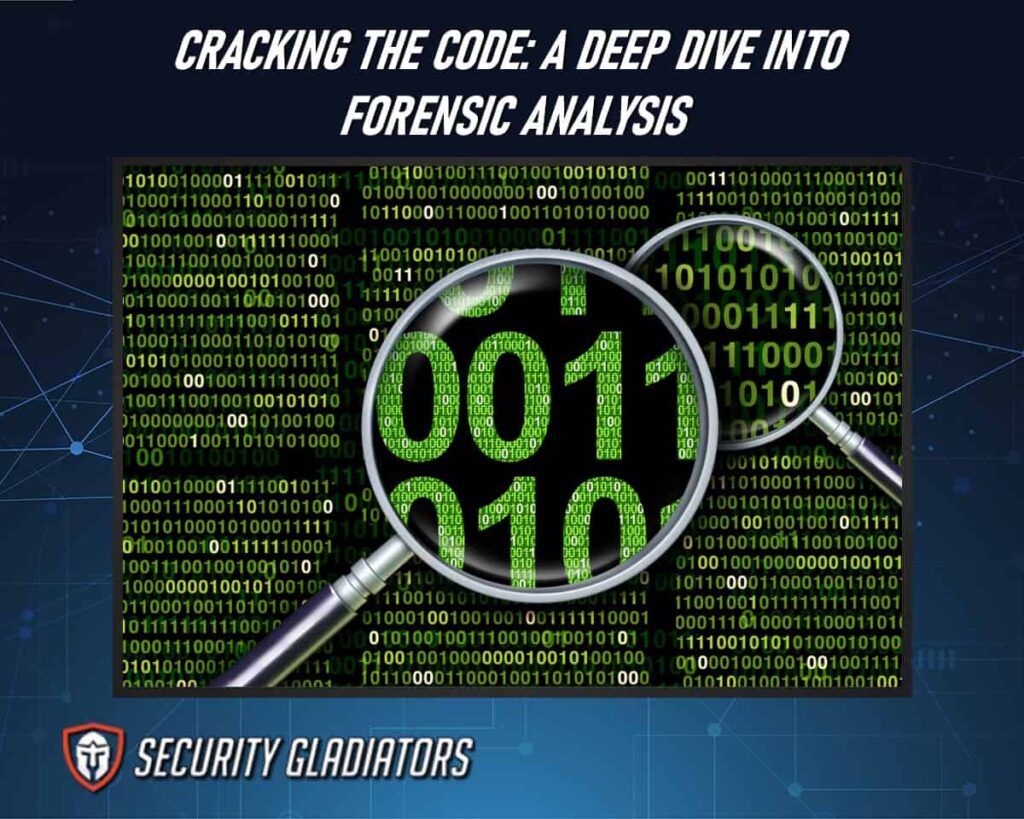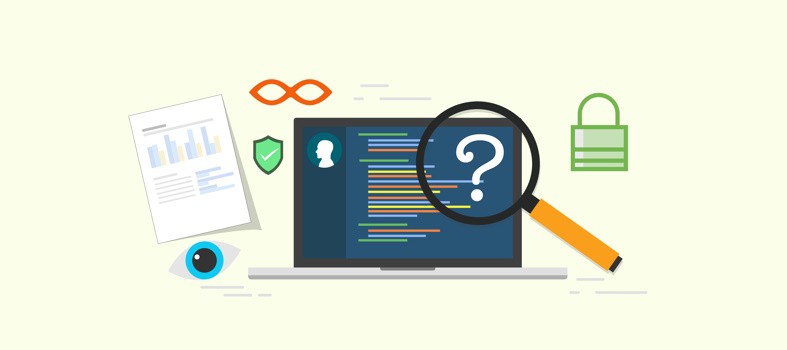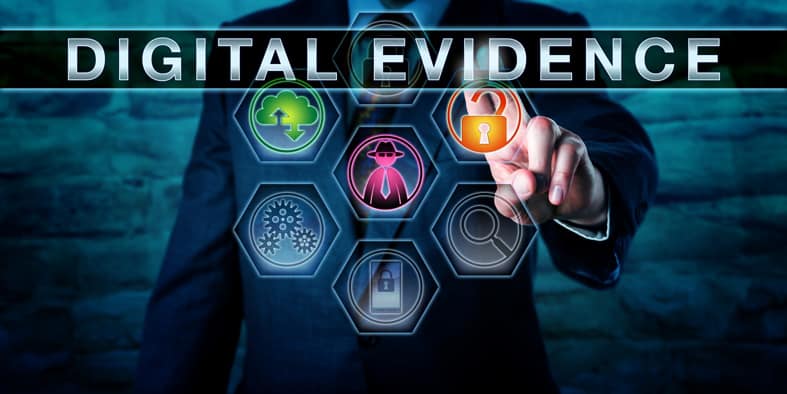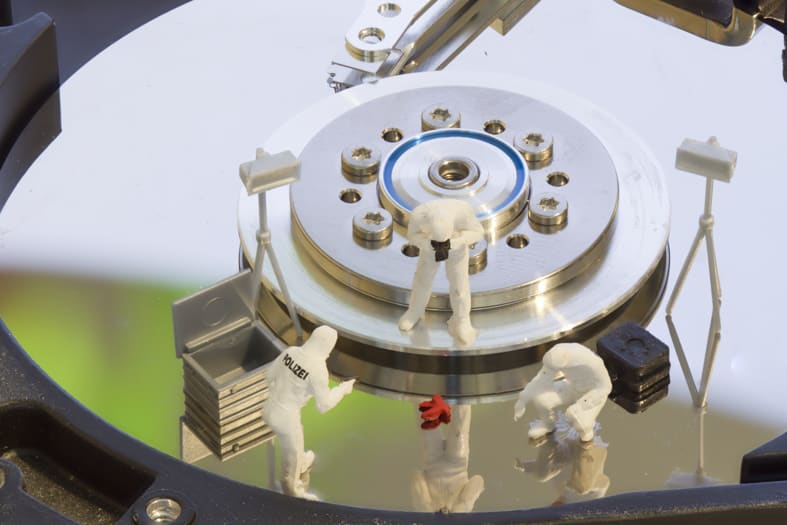
Table of Contents
What Is Forensic Analysis?
Forensic analysis involves the systematic examination and interpretation of digital, physical, and behavioral evidence to uncover and reconstruct events with a high degree of accuracy in order to assist legal proceedings or provide insight into security breaches. This multidisciplinary field, also known as digital forensics or computer forensics, combines principles from various disciplines such as computer science, law enforcement, and criminal justice. Forensic analysis and cybersecurity collaborate to protect digital systems by preventing, detecting, and investigating cyber threats while preserving the integrity of digital evidence.
Forensic investigators utilize specialized tools and techniques to collect, analyze, and preserve evidence from various sources including computers, mobile devices, networks, and social media platforms. In some instances, publicly accessible data could be utilized for forensic purposes, like content from Facebook postings. The goal is to identify potential perpetrators, determine the modus operandi used in committing a crime or breach, and present findings that can be admissible in court. The process involves acquiring data in a legally defensible manner while ensuring the integrity of the evidence throughout the investigation. This includes documenting all actions taken during the analysis phase to maintain a clear chain of custody. By employing rigorous methodologies and leveraging advanced technologies, forensic analysis plays a vital role in uncovering the truth behind a security incident while upholding the principles of objectivity and accuracy.
Steps for Conducting Forensic Analysis
When conducting a thorough examination of digital evidence, it is essential to follow a series of systematic steps to ensure the accuracy and integrity of forensic analysis. Here are the steps to follow when conducting forensic analysis:
1. Developing Policy and Procedures
Developing policy and procedures for digital evidence analysis is essential to ensure consistency, reliability, and ethical standards in the investigative process. By establishing clear guidelines and protocols, organizations can effectively manage the forensic analysis of digital activity and protect critical infrastructure from potential threats.
To achieve this, the following key elements should be considered:
Standardization
Developing a standardized approach ensures that all analysts follow consistent methodologies when conducting forensic analysis. This includes defining proper techniques for collecting, preserving, and analyzing digital evidence.
Chain of Custody
Establishing a chain of custody protocol helps maintain the integrity of potential evidence by documenting its handling and storage throughout the investigation process. This ensures that any evidence presented in court is admissible and has not been tampered with.
Data Retention
Defining policies regarding data retention is crucial to ensure that relevant information is preserved for future investigations or legal proceedings. Clear guidelines on how long different types of data should be retained will help organizations comply with legal requirements and support ongoing forensic analysis efforts.
2. Assessing the Evidence
To ensure the reliability and accuracy of digital evidence analysis, a meticulous assessment of the gathered evidence is imperative. In the context of forensic analysis and infrastructure protection, assessing the evidence involves a comprehensive examination of various elements such as file metadata, timestamps, system logs, network traffic records, and any other relevant artifacts.

This process aims to determine the integrity and authenticity of the evidence while also identifying potential sources of manipulation or tampering. Additionally, this assessment helps in establishing a clear chain of custody for the evidence, ensuring that it can be legally admissible in court proceedings if required. The analysis should involve both automated tools and manual inspection by skilled forensic analysts who possess a deep understanding of code structures and techniques used in cracking.
3. Acquiring Evidence
Acquiring evidence is a crucial step in forensic analysis and infrastructure protection, as it involves the systematic collection and preservation of digital artifacts. These artifacts can include files, emails, system logs, and network traffic records. The purpose of acquiring evidence is to ensure its reliability and admissibility in legal proceedings.
To achieve this, forensic analysts follow a meticulous process that involves:
- Identifying potential sources of evidence
- Securing the devices or systems from which the evidence will be acquired
- Creating a forensic copy of the data to avoid tampering or alteration
- Documenting all steps taken during the acquisition process
4. Examining the Evidence
Examining the evidence is a meticulous process that involves thorough analysis and evaluation of digital artifacts collected during the acquisition phase, ensuring the accuracy and reliability of information for potential legal proceedings. In the field of forensic analysis, forensic investigators rely on their expertise to meticulously examine the digital evidence obtained from a computing device. This examination entails scrutinizing various components such as files, folders, system logs, registry entries, internet browsing history, emails, chat logs, and metadata to reconstruct events and identify potential evidence relevant to the investigation.

Forensic investigators employ specialized tools and techniques to extract data from storage media in a forensically sound manner while maintaining its integrity. They carefully analyze this data using methods like file carving, keyword searches, timeline analysis, steganalysis (if applicable), encryption detection/decryption (if necessary), malware analysis (if present), network traffic analysis if network activity is involved in the case. Various methods that are used to extract volatile data demand that the computer be in a forensic lab in order to maintain the reliability of a chain of evidence. By employing these analytical approaches coupled with their deep knowledge of computing systems and digital forensics principles, forensic investigators can uncover vital information that may aid in determining guilt or innocence or protecting critical infrastructure from future attacks.
5. Documenting and Reporting
Documenting and reporting is an essential aspect of the forensic investigation process, as it allows for the clear and concise communication of findings, methodologies, and conclusions to relevant parties involved in law enforcement or legal proceedings. In the context of forensic analysis, documenting and reporting serve multiple purposes. Firstly, it ensures that all pertinent information related to the investigation is documented accurately, including details about the evidence collected, examination techniques employed, and any relevant observations made during the process. This comprehensive documentation not only serves as a record for future reference but also assists in maintaining transparency and accountability throughout the investigation.
Additionally, thorough documentation enables other forensic analysts or investigators to replicate and verify the results obtained by following the documented procedures. Moreover, reporting plays a crucial role in disseminating the findings to stakeholders such as law enforcement agencies or legal professionals who rely on this information to make informed decisions regarding criminal investigations or infrastructure security measures. The report should be structured logically with a clear introduction of objectives, followed by a methodological description outlining specific techniques used in data collection and analysis. Finally, it should provide an unbiased summary of findings while highlighting any potential limitations or uncertainties associated with them.
Tools for Forensic Analysis
Forensic analysis is a complex field that requires specialized tools to effectively examine and analyze digital evidence. These tools play a vital role in uncovering hidden information, identifying potential threats, and ensuring infrastructure protection. Here are a few examples:

Autopsy
This is an open-source tool with a graphical user interface that is employed for analyzing hard drives and smartphones. It is utilized globally to investigate computer activities.
Wireshark
This software tool captures and analyzes network activities, providing insights into network operations.
Encrypted Disk Detector
This utility assists in the examination of encrypted physical drives and supports encryption platforms like TrueCrypt, Bitlocker, and Safeboot.
Magnet RAM Capture
This tool is employed to acquire the physical memory of a computer, allowing for the analysis of memory-related artifacts.
Network Miner
Operating on Windows, Linux, and Mac OS X, Network Miner is a forensic analyzer used for detecting operating systems, hostnames, open ports, and sessions. It functions through PCAP files or packet sniffing.
Importance of Forensic Analysis for the Security of Your Infrastructure
Here’s why forensic analysis is important for infrastructure security:
Preventing Malware
Preventing malware requires implementing robust security measures that effectively detect and neutralize malicious software before it can infiltrate an infrastructure, compromising its integrity and potentially exposing sensitive information. Malware forensics play a crucial role in this process by examining the characteristics and behavior of malware to develop effective countermeasures. By analyzing the source code, forensic experts can identify vulnerabilities and potential attack vectors, allowing organizations to patch these weaknesses and prevent future infections.
Additionally, mobile forensics have become increasingly important as smartphones and other portable devices are commonly used for both personal and professional purposes. Mobile forensic investigations aid in identifying malware sources, understanding their propagation methods, and developing strategies to mitigate such threats. The knowledge gained from forensic analysis also contributes to the criminal justice system as it enables investigators to trace the origin of attacks, gather evidence against perpetrators, and support legal proceedings.
Retrieving Deleted Information
Retrieving deleted information is a critical aspect of digital investigations that involves analyzing residual data remnants to uncover valuable evidence and shed light on the activities of potential suspects. In a legal proceeding, the ability of retrieving evidence that has been intentionally or accidentally deleted can significantly impact the direction and outcome of an investigation. Forensic analysis techniques are employed to recover deleted files, emails, chat logs, or other digital artifacts that may provide crucial insights into the actions and intent of individuals involved in criminal activities.
To effectively retrieve deleted information, forensic experts utilize specialized software tools and methodologies designed to examine storage media at a binary level. These techniques allow for the identification and reconstruction of fragmented or hidden data structures, such as file headers or file allocation tables. Additionally, experts may employ advanced recovery techniques like carving, which involves searching for recognizable patterns within unallocated disk space to extract remnants of deleted files. The retrieval process requires meticulous attention to detail and thorough documentation to ensure the integrity and admissibility of the recovered evidence in legal proceedings.
Identifying Vulnerabilities
Identifying vulnerabilities in digital systems is a fundamental step in ensuring the security and integrity of sensitive data. In the context of forensic analysis and infrastructure protection, it is crucial to proactively identify any weaknesses or potential entry points that could be exploited by malicious actors. This process involves a comprehensive assessment of the system’s architecture, network protocols, software applications, and hardware components. By conducting thorough vulnerability scanning and penetration testing, experts can identify potential flaws such as outdated or unpatched software, misconfigured settings, weak encryption algorithms, or insecure authentication mechanisms.
Note:
Additionally, analyzing system logs and monitoring network traffic can provide valuable insights into potential attack vectors or suspicious activities. Identifying vulnerabilities allows organizations to take prompt remedial actions to mitigate risks and strengthen their defenses against cyber threats.Preventing Hackers
To prevent security incidents, organizations need to employ a multi-layered approach that includes proactive monitoring, timely patching, and regular vulnerability assessments. Common techniques used by hackers include phishing attacks, malware injection, and exploiting software vulnerabilities. Implementing forensic analysis tools can help detect and mitigate potential threats on mobile devices by analyzing suspicious activities or identifying malware presence. By staying up-to-date with emerging threats and continuously improving infrastructure protection strategies, organizations can significantly reduce the risk of successful cyberattacks.
Frequently Asked Questions
How Do You Determine if Evidence Has Been Tampered With During the Forensic Analysis Process?
Detecting evidence tampering during the forensic analysis process involves comparing the acquired data with its known original state through checksums or digital signatures. Any inconsistencies or alterations in the data’s structure, timestamps, or metadata can raise suspicions of tampering. Employing robust hashing algorithms and maintaining secure custody of evidence are integral in ensuring the credibility of the analysis results.
What Are Common Challenges Faced When Acquiring Digital Evidence?
Common challenges in acquiring digital evidence include the volatility of digital data, encryption and password protection, anti-forensic techniques employed by criminals, jurisdictional issues, and the need for specialized tools and expertise to extract and preserve evidence without compromising its integrity.
Can Forensic Analysis Tools Recover Data From Encrypted Devices?
Forensic analysis tools have the capability to recover data from encrypted devices by utilizing various techniques such as password cracking, decryption algorithms, and key recovery. These tools are designed to bypass encryption barriers and access the underlying data.
How Can Forensic Analysis Help in Identifying the Source of a Cyber Attack?
Forensic analysis can help identify the source of a cyber attack by examining digital evidence such as logs, network traffic, and malware. This process involves analyzing patterns, signatures, and other indicators to trace back to the origin of the attack.
Conclusion

Forensic analysis plays a crucial role in cybersecurity as it helps detect, investigate, and prevent cybercrimes. It involves the collection, preservation, and analysis of digital evidence to identify the source, method, and motive behind cyberattacks. Furthermore, forensic analysis assists in incident response, enabling organizations to quickly and effectively mitigate the impact of cyberattacks. By analyzing and understanding the tactics, techniques, and procedures employed by attackers, organizations can improve their security measures and prevent similar attacks in the future.

